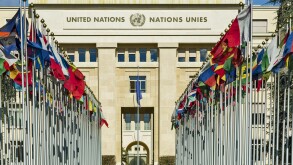On December 9 2020, the Chilean Internal Revenue Service (IRS) issued Resolution No. 151/2020, introducing regulations to validate tax residency certificates for applying tax treaty benefits or the full corporate income tax (CIT) credit scenario for dividend distributions tax (DDT) (treaty scenario). The resolution also provides for guidelines as to how transparent/flow-through entities should be treated in a dividend distribution tax treaty context, being the first approach released in this regard.
As a matter of background, Chile has a two-level integrated tax system under which, as a general rule, the tax paid at the corporate level (27%) is generally creditable against the 35% withholding tax rate applicable to actual distributions (cash basis). In principle, only 65% of the corporate-level tax is creditable against the 35% withholding tax, unless the shareholder is resident in a tax treaty jurisdiction and a beneficiary of dividend income under the relevant tax treaty. In a tax treaty scenario, the underlying CIT paid (27%) should be fully creditable against the 35% withholding tax (i.e. not limited to 65%), thus that the overall income tax burden on distributed profits should be capped to 35%.
Accordingly, tax treaty residency and beneficiary status are both key circumstances for the distribution of profits tax treaty scenario to apply. In this regard, the resolution provides for guidance as to how these requirements should be supported and evidenced to the Chilean IRS.
First, the resolution states that the tax residency certificate should be available to the withholding agent or custody, as of the accrual of the withholding tax liability.
The tax residency certificate should be issued either by electronic means or through a hard copy, and the Chilean IRS is now entitled to validate tax residency certificates through electronic means (e.g. foreign IRS website). If such electronic authentication is not possible, the certificate would need to be legalised, unless apostille is available with the respective foreign jurisdiction. The certificate will be valid for the period stated therein and, in the absence of an effective date, the tax residency will be valid for the time set in the respective foreign law. Where no reference is made to an effective date or term, the certificate will be deemed to be valid until the last day of the year of issuance (aligned with the legal presumption introduced by the 2020 tax reform - Law No. 21.210).
Furthermore, the resolution elaborates on substance requirements for tax treaty scenarios to apply. Indeed, it states that the tax residency required is the residency of the effective beneficiary of the income, making applicable beneficial ownership regulations issued in Chile - aligned with the OECD beneficial ownership approach.
Finally, the resolution also provides for a definition of what should be understood as transparent/flow-through entities for Chilean tax purposes. Indeed, transparent entities would be those entities or agreements whose income, or part of their income, is not subject to tax at the level of such entities or agreements, but instead at the level of the entities/individuals having an interest in them.
The resolution states that transparent entities, as described above, would in principle not be eligible to the full CIT credit tax treaty scenario, unless such transparent entity is legally or contractually binded to remit the income received or accrued, to the entities/individuals having an interest in them. In that scenario, the resolution allows for the tax residency and beneficial ownership requirement to be tested at the transparent entity owners’ level.
This is significant progress as Chilean corporate law does not provide for a transparent or flow-through entity concept.
For tax purposes, this seems to be the first clear guidance issued by the Chilean IRS as to how flow-through entities should be treated in a dividend distribution tax treaty scenario context.
Therefore, this resolution is a call for reviewing formal and substance requirements for the tax treaty scenario to apply.
Mauricio Valenzuela
Partner
E: mauricio.valenzuela@pwc.com
Santiago Tubio
Lawyer













